Então seu laptop está ficando sem portas e você precisa conectar mais coisas - Nós entendemos! Entre seu monitor externo, teclado, mouse, disco rígido externo e quem sabe que outros acessórios, essas duas portas USB integradas simplesmente não estão mais dando conta.
Você começa a pesquisar coisas como "expansor de porta USB" e se depara com essas coisas chamadas hubs USB e estações de encaixe. Ambos parecem fazer o trabalho, mas qual é a diferença? Qual é a escolha certa para suas necessidades? Vamos nos aprofundar para que você possa tomar a decisão mais informada.
Índice
- 1. Destrinchando as principais diferenças
- 2. Potência e velocidade de carregamento
- 3. Velocidades de transferência de dados
- 4. Hub vs Station: O que é melhor para Seu Precisa?
- 5. E quanto à compatibilidade e preparação para o futuro?
- 6. Dicas de configuração e uso suaves
- 7. Mantenha seu equipamento zumbindo
- 8. Vamos encerrar isso
- 9. As pessoas também perguntam
Destrinchando as principais diferenças
Hubs USB são projetados para portabilidade e simplicidade. Basta conectá-los à porta USB do seu computador e pronto - expansão instantânea. Eles são basicamente mini replicadores USB, espremendo um punhado de portas USB downstream extras variando de cerca de 3 na extremidade inferior a 10+ em modelos de alta capacidade.
O Tempo do Cabo Hub USB 3.0 de 7 portas embala 7 portas USB 3.0 extras (também chamadas de USB 3.1 Gen 1) em um gabinete compacto alimentado inteiramente via energia de barramento da porta USB upstream do seu computador. Não é necessário nenhum bloco de energia extra. Apenas a simplicidade da placa conversora.
Estações de ancoragem Aumente um nível - ou dez. Verdadeiros replicadores de portas com esteróides, eles visam substituir praticamente todas as portas do seu laptop por uma única rio acima cabo para seu computador enquanto situa tudo o mais externamente. Estamos falando de portas USB em abundância, ethernet, conectores de vídeo como HDMI e DisplayPort, slots de cartão SD - até mesmo energia de carregamento.
É uma loja de conectividade completa que expande drasticamente a E/S do seu laptop. Modelos como o Cabletime Dock de exibição tripla enfie uma variedade impressionante de portas em um só lugar. Estamos falando de 1 conector USB-C upstream para seu laptop mais recursos downstream como 3 portas USB 3.0, 2 HDMI, 1 DisplaPort, leitores SD/microSD, ethernet e muito mais. E esse é apenas um exemplo - os recursos da estação de acoplamento abrangem toda a gama.
Resumidamente:
Hubs USB: SOMENTE portas USB downstream extras
Estações de ancoragem: Todos os tipos de portas downstream + energia de carregamento
Agora vamos explorar algumas comparações de critérios importantes para ajudar você a decidir qual rota realmente atende às suas necessidades e orçamento...
Potência e velocidade de carregamento
Quando se trata de carregar seus dispositivos conectados, os hubs USB e as estações de acoplamento diferem muito na quantidade de energia que fornecem.
Carregamento do hub USB: A maioria dos hubs USB não carregam dispositivos conectados, já que eles extraem energia do barramento diretamente da porta USB do seu computador. Na melhor das hipóteses, você pode obter algum carregamento lento para dispositivos de baixa potência, dependendo do hub. Mas definitivamente não espere recarregar rapidamente telefones, tablets ou outros equipamentos que consomem muita energia por meio de um hub USB básico.
Estação de carregamento de encaixe: Por outro lado, as estações de encaixe ostentam capacidades de carregamento sérias - tanto em termos de velocidade de carregamento (potência) quanto na capacidade de carregar vários dispositivos simultaneamente. Com adaptadores de energia CA dedicados e de alta potência, as estações de encaixe podem carregar rapidamente laptops, telefones, tablets, fones de ouvido, câmeras e qualquer outra coisa carregável por USB, muitas vezes enquanto ainda conectando todos os seus outros periféricos.
Por exemplo, o Cabletime Estação de carregamento PowerPod 100W Dock pode bombear incríveis 100 watts para carregar dispositivos em velocidades máximas. Ou adaptar-se dinamicamente para fornecer taxas de carregamento rápido ideais para telefones, tablets, consoles Nintendo Switch. Tudo ao mesmo tempo. Isso é flexibilidade de carregamento no seu melhor!
Velocidades de transferência de dados
Quando se trata de mover dados, os hubs USB geralmente correspondem à especificação USB nativa do computador ao qual estão conectados. Então, se seu laptop suporta USB 3.0, todos os dispositivos conectados downstream pelo hub também suportarão. Coisas bem diretas — qualquer padrão USB que seu computador usa para sincronização de dados é transmitido pelo hub.
As estações de encaixe, por outro lado, desbloqueiam velocidades de transferência de dados de nível superior além do USB padrão. Os modelos de primeira linha integram interfaces de largura de banda ultra-alta como Raio 3 (até incríveis 40 Gbps) ou a especificação emergente USB4 (baseada no Thunderbolt 3).
Por exemplo, o CD302C da Cabletime Estação de acoplamento dupla 4K aproveita a tecnologia de ponta Thunderbolt 3 em um design voltado para o futuro que supera o USB padrão em até 4X para velocidades de iluminação de 40 Gbps, perfeitas para transferir grandes blocos de dados em um piscar de olhos.
Essa é a diferença entre esperar minutos e segundos para mover fotos de alta resolução, filmagens de vídeo, bibliotecas de mídia massivas entre dispositivos e drives. Para profissionais criativos e usuários empresariais que lidam constantemente com arquivos grandes, a diferença de produtividade muda o jogo.
Resumo: Velocidade do Hub USB = especificação USB nativa do seu computador | Velocidade da estação de acoplamento = Bleeding edge (Thunderbolt 3, USB4)
Hub vs Station: O que é melhor para Seu Precisa?
Hubs USB e estações de encaixe atendem, em última análise, a diferentes necessidades e casos de uso. Para fazer a melhor escolha, considere atentamente seus principais requisitos:
O usuário do Office
Se você só precisa conectar ocasionalmente mouses USB, teclados, discos rígidos externos, impressoras, tablets de desenho ou outros acessórios USB de escritório, um hub USB fornece expansão plug-and-play simples. Modelos como o Cabletime Hub USB 3.0 de 7 portas custam menos de US$ 50 e conectam tudo sem esforço.
Mas se você também quiser controlar dois monitores externos do seu laptop, acessar gigabit ethernet com fio ou aproveitar os slots de cartão SD, as estações de encaixe completas conectam-se virtualmente tudo você precisaria para uma potência de estação de trabalho aprimorada. Conecte tudo em um único cabo USB-C para a melhor experiência de desktop simplificada com opções como o dock de três monitores focado em produtividade da Cabletime.
O jogador de PC
Os jogadores também precisam de conectividade! Entre teclados e mouses RGB para jogos, controladores de todos os tipos, discos rígidos externos para salvar clipes e capturas, fones de ouvido, câmeras de streaming e outros equipamentos, as portas USB desaparecem rapidamente. Hubs USB econômicos como o modelo de 7 portas da Cabletime conectam habilmente todos os periféricos de equipamentos de jogos.
Mas digamos que você também queira que seu equipamento de jogos seja conectado como o coração de todo o seu centro de entretenimento - conectando aquela TV 4K gigante na parede para jogos em tela grande, conectividade com sistema de som surround e talvez até mesmo aquelas faixas de luz de destaque atrás da mesa.
Para imersão em nível de sala de estar e fusão perfeita de jogos/entretenimento, uma docking station premium como a da Cabletime Estação de ancoragem 6 em 1 para deck de vapor se destaca para desempenho de jogo, personalização e estilo inigualáveis. Pronto para dominar em duas telas brilhantes com todos os acessórios possíveis a reboque. Basta conectar e usar.
O profissional criativo
Para profissionais criativos que constantemente embaralham grandes lotes de fotos, vídeos e projetos multimídia de alta resolução, a velocidade de transferência de arquivos é tudo para manter você no fluxo criativo. E a maioria dos laptops simplesmente não dá conta do recado no departamento de largura de banda, limitando as velocidades de transferência em portas USB 2.0/3.0 padrão. Grande chatice e perda de tempo!
As estações de acoplamento Thunderbolt 3 e USB4 premium quebram as barreiras de largura de banda com conexões de ultra-alta velocidade de 40 Gbps ou mais rápidas, projetadas especificamente para produção de mídia criativa e outros aplicativos extremamente intensivos em dados, onde o desempenho de transferência importa muito. Estamos falando de economizar minutos ou até mesmo horas em um grande cenário de backup ou transferência de arquivos.
Para fotógrafos, cinegrafistas, designers gráficos e artistas digitais, opções sensuais de alto desempenho como a Cabletime Dock baseado em Thunderbolt 4 marque cada caixa: transferências de dados extremamente rápidas, conectividade de exibição expandida, replicação de porta de tudo, dispositivos de carga, acesso à rede, descarregamento de filmagens para RAIDs SSD externos. Todas as coisas de E/S que os criativos precisam para permanecer focados na parte de criação real!
E quanto à compatibilidade e preparação para o futuro?
Antes de gastar dinheiro em novos equipamentos, vale a pena verificar duas vezes:
- Isso realmente funcionará com TODOS os meus equipamentos agora?
- Ele continuará funcionando sem problemas no futuro enquanto eu atualizo dispositivos e sistemas?
Vamos nos aprofundar em ambas as frentes:
Compatibilidade de SO e Hardware
Felizmente, as estações de acoplamento USB e Thunderbolt funcionam amplamente em máquinas Windows, Mac e Linux atualmente. Os protocolos USB e Thunderbolt em si são agnósticos de plataforma.
Mas é sempre sensato verificar novamente as especificações do fabricante para quaisquer limitações potenciais com base em tipos específicos de conectores de host (USB-C vs Thunderbolt), velocidades de porta (USB 2.0 vs 3.2) ou sistemas operacionais de dispositivos. Às vezes, há ressalvas como compatibilidade de driver em certas distros Linux ou versões de SO legado.Então confirme se o hub ou dock suporta totalmente o seu equipamento antes de apertar o gatilho!
No lado dos dispositivos periféricos, hubs e docks geralmente funcionam bem com qualquer coisa que você conectar de forma realista, como unidades de armazenamento, teclados, impressoras, telefones, tablets, monitores, etc. Mas se você tiver algum equipamento antigo ou algo com protocolos de conectividade de nicho, verifique a ampla compatibilidade.
Atualizações e suporte de longo prazo
Como qualquer fabricante de equipamentos, a Cabletime lança continuamente atualizações de firmware para corrigir bugs, expandir conjuntos de recursos e se adaptar ao hardware e às plataformas mais recentes ao longo do tempo. Ele pode suportar seu laptop e telefone perfeitamente hoje... mas e aquele novo MacBook Pro que você inevitavelmente vai comprar em 2 anos?
Escolha uma marca estabelecida como a Cabletime com uma longa pista de suporte contínuo por meio de atualizações. Dessa forma, seu investimento em hub ou docking station se mantém suavemente por um longo período e pela próxima geração de gadgets, em vez de acabar como sucata de lixo eletrônico.
Atualizações de firmware que melhoram a funcionalidade diferenciam marcas confiáveis de imitações baratas na Amazon. Saber que sua compra de conectividade realmente viverá para ver amanhã traz paz de espírito hoje.
Dicas de configuração e uso suaves
Tudo bem, você fez sua lição de casa sobre o confronto entre hub USB e estação Thunderbolt e escolheu o modelo perfeito para suas necessidades de um fabricante respeitável como a Cabletime. Toca aqui!
Para garantir que seu novo equipamento dure muito tempo, siga este conselho:
Revise cuidadosamente as instruções de configuração para quaisquer instalações de driver, atualizações de firmware ou configurações de hardware necessárias. Não pule etapas!
Execute todas as atualizações de firmware/driver disponíveis antes de conectar dispositivos quando possível. Isso garante compatibilidade futura.
Considere uma solução de gerenciamento de cabos como mangas e envoltórios para controlar a desordem, já que hubs e dock naturalmente geram cabos em abundância! Mantenha as coisas com fiação limpa.
Habilitar modos de economia de energia como suspensão seletiva USB quando não estiver usando periféricos conectados para economizar energia.
Priorize dispositivos que consomem muita largura de banda em portas de alta velocidade como USB 3.2 Gen 2 x 2 ou Thunderbolt para desempenho máximo quando a velocidade de transferência é importante.
E nunca hesite em alavancar suporte ao cliente! A equipe da Cabletime está sempre disponível para ajudar a solucionar quaisquer problemas de configuração ou dúvidas de uso.
Mantenha seu equipamento zumbindo
Como qualquer hardware, os equipamentos USB e Thunderbolt se beneficiam de cuidados periódicos simples para desempenho máximo e longevidade:
- Mantenha portas, superfícies e ventiladores livres de poeira usando ar comprimido
- Armazene os dispositivos adequadamente quando não estiverem ativos em vez de deixar os cabos pendurados
- Sempre atualize o firmware/drivers quando disponível
- Substitua todos os cabos desgastados, danificados ou abaixo das especificações
- Considere acessórios como suportes sob a mesa para organizar a fiação de forma organizada
Equipamentos USB/Thunderbolt bem cuidados podem funcionar de forma confiável por anos antes de precisar de substituição no fim da vida útil, conforme as necessidades evoluem.
Vamos encerrar isso
No final do dia, suas necessidades e configurações individuais devem determinar se um Central USB para conectar apenas dispositivos USB ou mais avançados Dock Thunderbolt para expansão completa da estação de trabalho que melhor lhe convier.
As principais considerações incluem requisitos de variedade de portas (apenas USB ou expansão de E/S mais ampla), limitações de energia de carregamento, limites de velocidade de sincronização de dados com base na carga de trabalho e compatibilidade de hardware agora e anos a partir de agora, e orçamento geral.
Para expansão ocasional de periféricos USB, os hubs oferecem simplicidade plug-and-play que é difícil de superar. Mas para replicação de desktop real com velocidades de última geração, potência de carregamento e preparação para o futuro, as estações de encaixe de capacidade total levam as coisas para o próximo nível.
Uau, isso foi um monte de informações comparativas úteis entre hubs USB e docks Thunderbolt! Espero que agora você se sinta bem equipado para escolher a solução de expansão perfeita para suas necessidades. Pronto para navegar pelas principais opções? Confira a programação estelar da Cabletime agora!
As pessoas também perguntam
Uma estação de acoplamento afeta a velocidade?
Não, uma docking station não afeta a velocidade do seu dispositivo. Ela apenas fornece portas e conexões adicionais.
As estações de acoplamento prejudicam a duração da bateria?
Não, docking stations não prejudicam a vida útil da bateria. No entanto, manter seu dispositivo constantemente conectado pode aumentar o consumo de energia.
Qual é a diferença entre estações de acoplamento baratas e caras?
Estações de encaixe caras geralmente oferecem mais portas, melhor qualidade de construção e recursos adicionais, como fornecimento de energia, saída de vídeo e suporte a áudio. Modelos mais baratos podem ter menos portas e menor qualidade de construção.

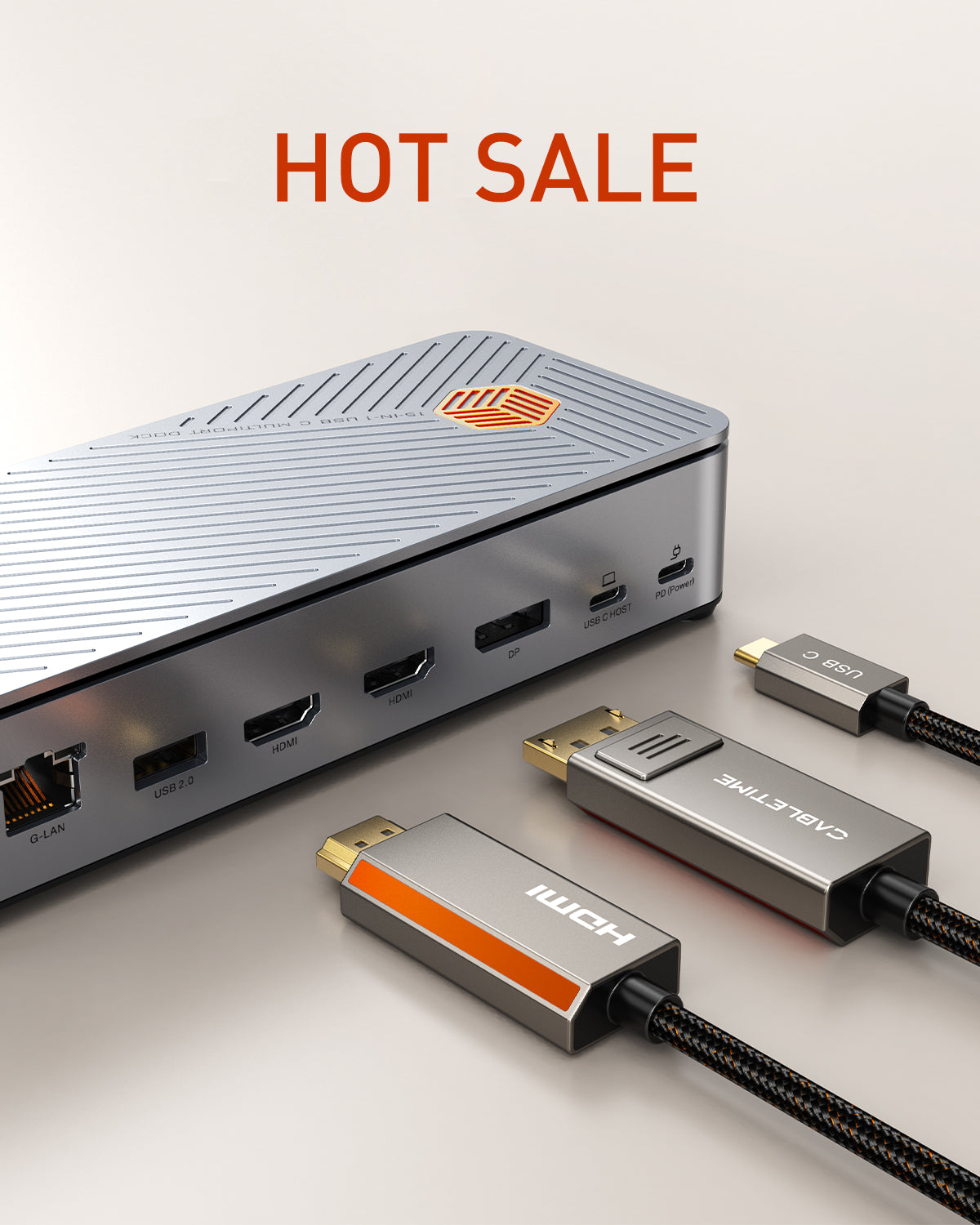
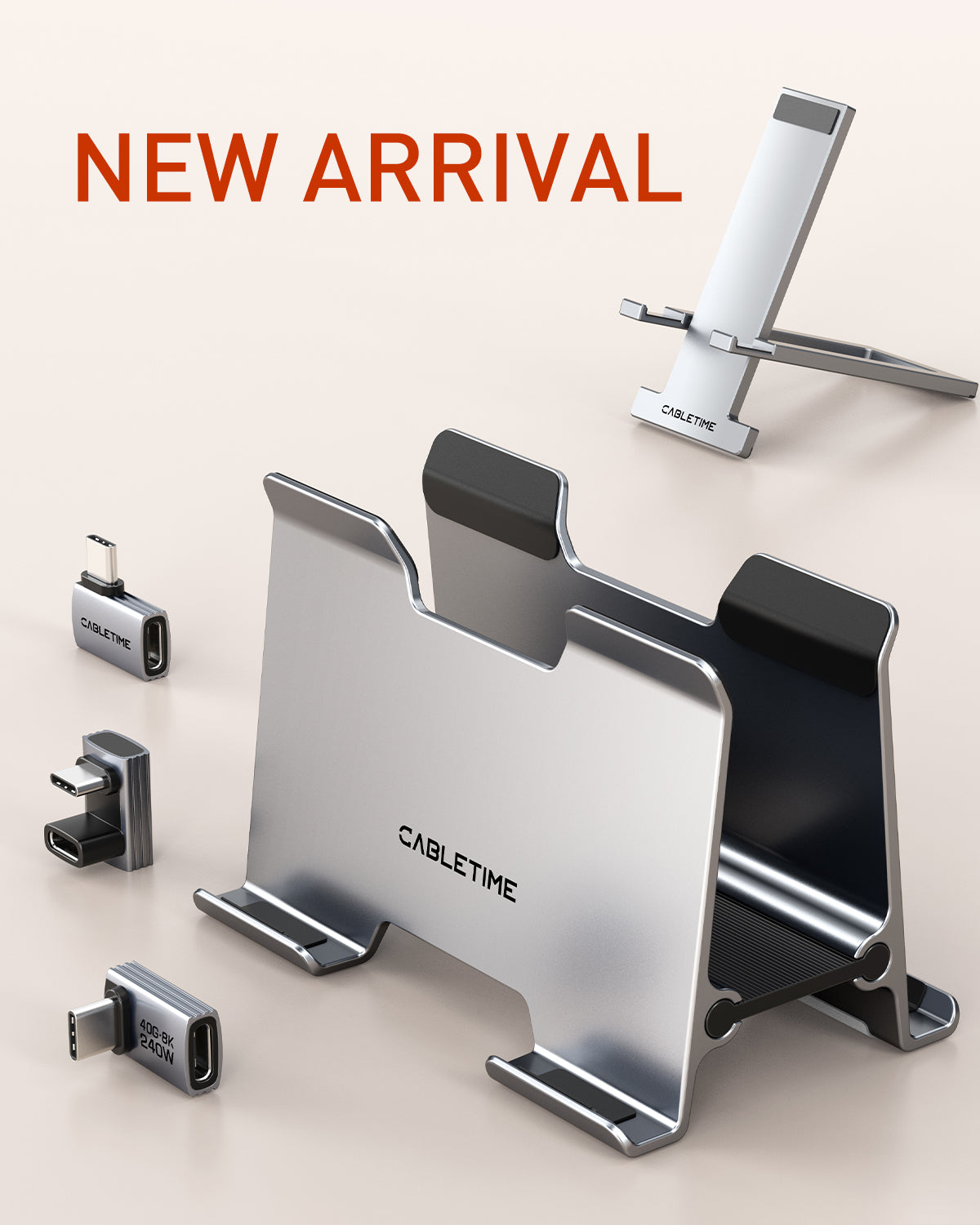
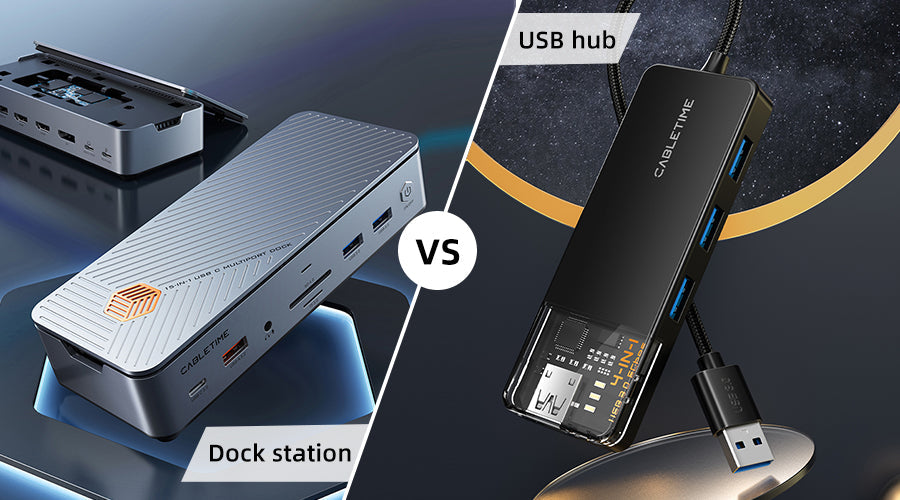
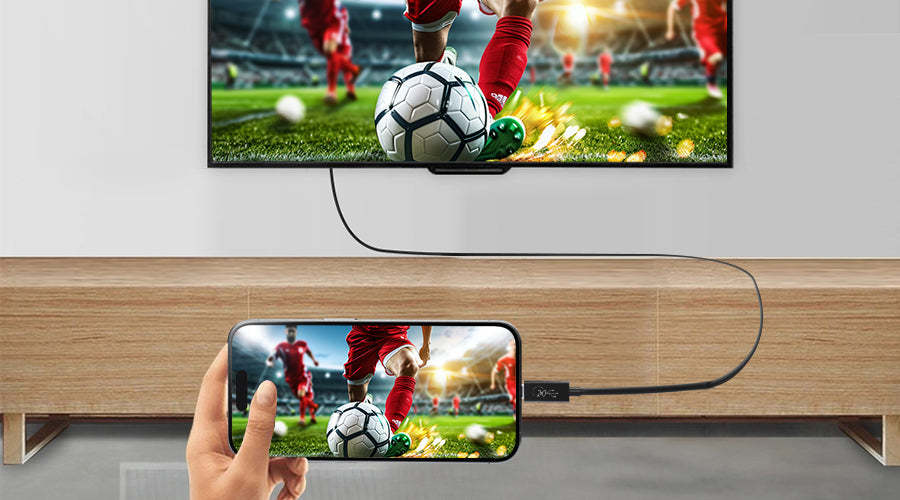
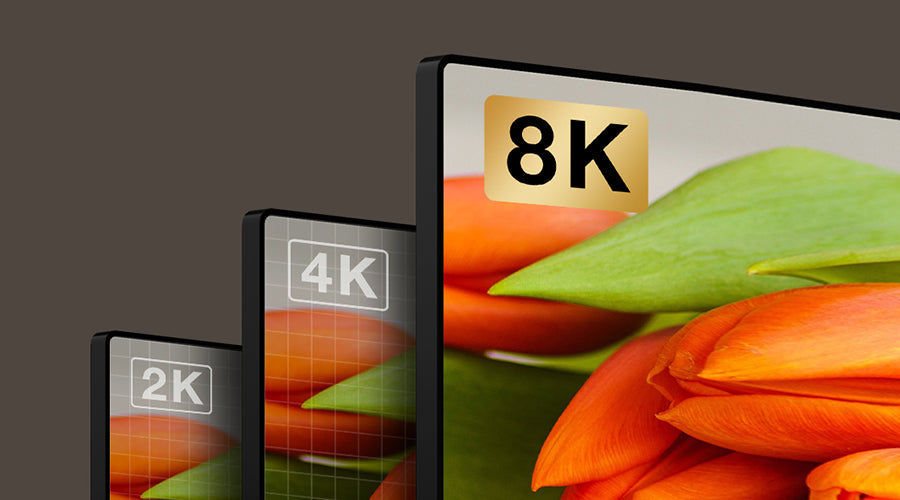
Deixar comentário
Este site é protegido por hCaptcha e a Política de privacidade e os Termos de serviço do hCaptcha se aplicam.